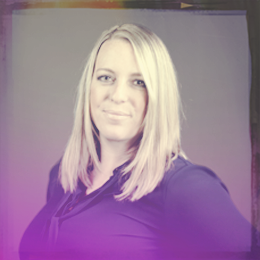In the last 4 months how many times have you said or heard the word PIVOT when talking about a conference or convention? And how many times did the image of Ross Gellar and a couch pop up in your mind?
Lately I’ve gotten used to running full steam ahead on a project only to abruptly stop … and pivot. Quickly turning an in-person event into a smaller in-person event with a virtual component. And then turning that into a full virtual event. Or planning a stellar trade show booth experience and then pivoting that into a virtual booth. But in all of our (necessary) hast and 90 degree turns, did we pivot our expectations, our goals, and our marketing strategy?
Look at your event goals. Do they still seem obtainable in a virtual world? If not, how can you change your strategy to still be successful? What other opportunities are available for you to have a profitable year? And what does a successful event look like? How can you move budgets around to be more effective?
Let’s look at some hypothetical scenarios and what a pivot could look like:
Scenario 1
Company A always attends a conference as an exhibitor, typically one of the smaller booths. Their strategy is to leverage their outgoing sales team and talk to as many people as possible. For them, bringing home numerous leads and landing one is a good ROI. This year the event has gone virtual. The trade show booth opportunities are limited and the “smaller booth” option is not interactive.
Company A has decided to not attend the conference this year — feeling that the limited interaction was not worth investment. Instead, they will use the budget allocated for the event on digital ads and list rental — still pushing brand awareness, reaching a large audience, and hopefully landing the sale.
Scenario 2
Company B hosts a yearly convention and takes pride in the attendee experience they curate, sparing no expense. The convention is typically attended by C-suite professionals that look forward to the multiple opportunities to network professionally and socially, as much as they enjoy the educational aspect of the event. The event has gone virtual with a platform that provides a great learning experience.
Company B has shifted their marketing messaging to be less focused on networking, AND less focused on CEOs. By going virtual and having strong event content, this is an opportunity to target deeper within companies and gain new advocates, creating more brand awareness. Yes, they might lose some of the C-suite attendees, but they can gain attendees from lower down the org chart that seek learning opportunities and hopefully have a larger audience next year.
Scenario 3
Company C always attends a conference as an exhibitor with a premium booth, allocating a large part of their marketing budget toward promotional items, travel expenses, and a top-notch booth experience. Attendees are focused on the educational aspect, needing to earn professional credits, but enjoy — and base their satisfaction on — the amount of swag they are able to collect at the trade show. This year the event has gone virtual, offering an interactive trade show experience based on traditional booth sizes.
Company C has decided to not to move forward with their premium booth, but to still have a presence at the virtual trade show in a “smaller” booth selection. Their staff will be available to field questions and share information. However, company C still wanted an opportunity to get swag with their brand name in the hands of their audience. So with the budget they saved by changing their booth size, they have planned giveaways on their social media accounts and around attendees “visiting” their virtual space. By rewarding their audience to like, share, and tag on social media, they are increasing their brand awareness and still delivering their brand into the hands of their audience.
Events are here to stay, they just might look a little different for the health and well-being of everyone. As marketing and event professionals, we simply have to accept the need to pivot — on everything.
